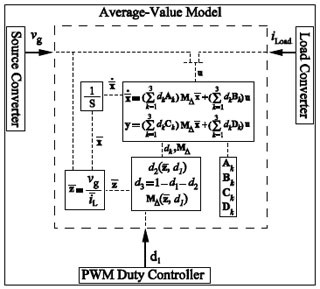Computer-Aided Averaged Modeling of dc-dc Converters
Ali Davoudi with adviser Patrick L. Chapman
Average-value modeling of dc-dc converters is indispensable for small-signal frequency-domain characterization and/or for computationally efficient system-level time-domain transient studies. Conventional analytical averaged methodologies have been extensively investigated in the literature. However, it is very difficult to extract a unified averaged model that considers the effects of parasitics, is seamlessly functional in all operational modes, and does not include simplifying approximations (e.g., piecewise linear inductor current waveforms). To address the above mentioned concerns, an effort is undertaken to systematically construct a fairly accurate model directly from the net list of the circuit understudy using a detailed simulation. Previous models were successfully tested for constant input voltage. Recently, the methodology is extended to account for source dynamics to utilize the system-level simulation of the power-electronics-based systems. Also, a fast procedure is investigated to efficiently set up the final model. The model structure for the switched pulse-width modulation (PWM) family of dc-dc converters is shown in Figure 20, whereas the averaged counterpart is represented in Figure 21. Due to the versatile structure of this methodology, it is now being extended to the current-controlled mode (e.g., peak current mode control). The resulting models have shown accuracy in predicting the large-signal time-domain transients as well as small-signal frequency-domain characterizations by comparison with detailed simulation and hardware measurements.

